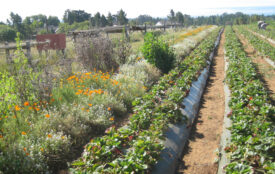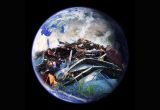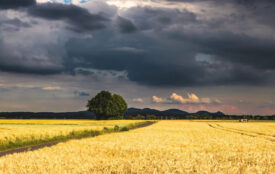The history of Arctic ecosystems as a guide to the future
How are tundra ecosystems impacted by grazing and climate change, and how will future changes to the Arctic affect the living conditions of its residents?
These questions are being addressed by an international research collaboration between environmental genomics, ecology and anthropology in a project coordinated by Junior Professor Laura Epp from the University of Konstanz. The researchers will combine ancient DNA from sediment cores with current ecological data and anthropological studies. The knowledge gained will be transferred into the communities of the studied areas. Over the next three years, the project “Future ArcTic Ecosystems (FATE)” will be supported with a total of around 1.7 million euros through the BiodivScen ERA-Net COFUND programme, launched by BiodivERsA, the European network on biodiversity and ecosystem services, as well as the Belmont Forum, an international partnership that mobilizes funding of environmental change research.
The researchers will perform a long-term study of Arctic ecosystems reaching from the last ice age to current developments and generate results that are relevant for current land use. “Local inhabitants have a legitimate interest in knowing what is happening, both economically and climatically. Using the different sets of information, we will develop scenarios of how ecological changes in the Arctic will progress”, says Laura Epp, who moved from the Alfred Wegener Institute in Potsdam to the Limnological Institute of the University of Konstanz in 2018.
The Arctic is particularly affected by climate change. Although the region is only sparsely populated, the impacts are very serious for its inhabitants. At the same time, grazing and a changed grazing pressure also have a large impact on the vegetation. Large mammals have been important herbivores in the tundra for a long time. During the ice ages, mammoths and woolly rhinos grazed on the ice-free areas of the Arctic tundra. Today, reindeer, which are economically highly relevant, make up the major part of the large mammals.
The project consortium encompasses teams from seven countries – Germany, Norway, Sweden, Finland, France, Canada and the USA – and uses a new method to reconstruct the environment of the past based on DNA from sediment samples. To collect these samples, which act as an archive for DNA traces, sediment cores are extracted from lakes. The oldest DNA traces in sediments ever found are from beneath a glacier and about half a million years old. Usually, Laura Epp examines sediments on time scales of millennia. In another future project, she plans to go back around 16,000 years and study sediments of Lake Constance from the final stage of the last ice age.
Some of the Arctic samples in the current project will be tens of thousands of years old. Laura Epp’s team for Environmental Genomics and the collaborating research teams will look for DNA traces of vegetation and mammal populations in the sediments. Through this collaboration, the project consortium will work on samples from all parts of the Arctic.
For plants, the method has been well established and can be used for a detailed description of the vegetation. With as little as around two grams of Arctic sediment, 30 to 40 different plant species can be identified. Principally, this method of examining DNA from sediment samples can also be used to trace back mammals over the millennia. “We know that for plants, genomic palaeo-environmental methods are very reliable. However, before we can analyse populations of large mammals, we need to refine these methods and, for example, include DNA from fungi living on mammal dung. This will give us entirely new insights”, says Laura Epp.
The information from millennia-old sediments is supplemented by ecological data that ecologists have collected on grazed and non-grazed areas of the Arctic over several decades. This will uncover the short-term developments and can reveal mechanisms of change. The data sets from both time scales are then combined and analysed. In addition, anthropologists work with a number of Arctic communities, especially with “stakeholders” of reindeer herding, such as members of the reindeer herding community, local decision makers and politicians. They are interviewed in detail about reindeer herding and environmental changes they have noticed over the past few decades. This knowledge in combination with the scientific data will be used to predict future developments and develop scenarios for future ecosystems.







